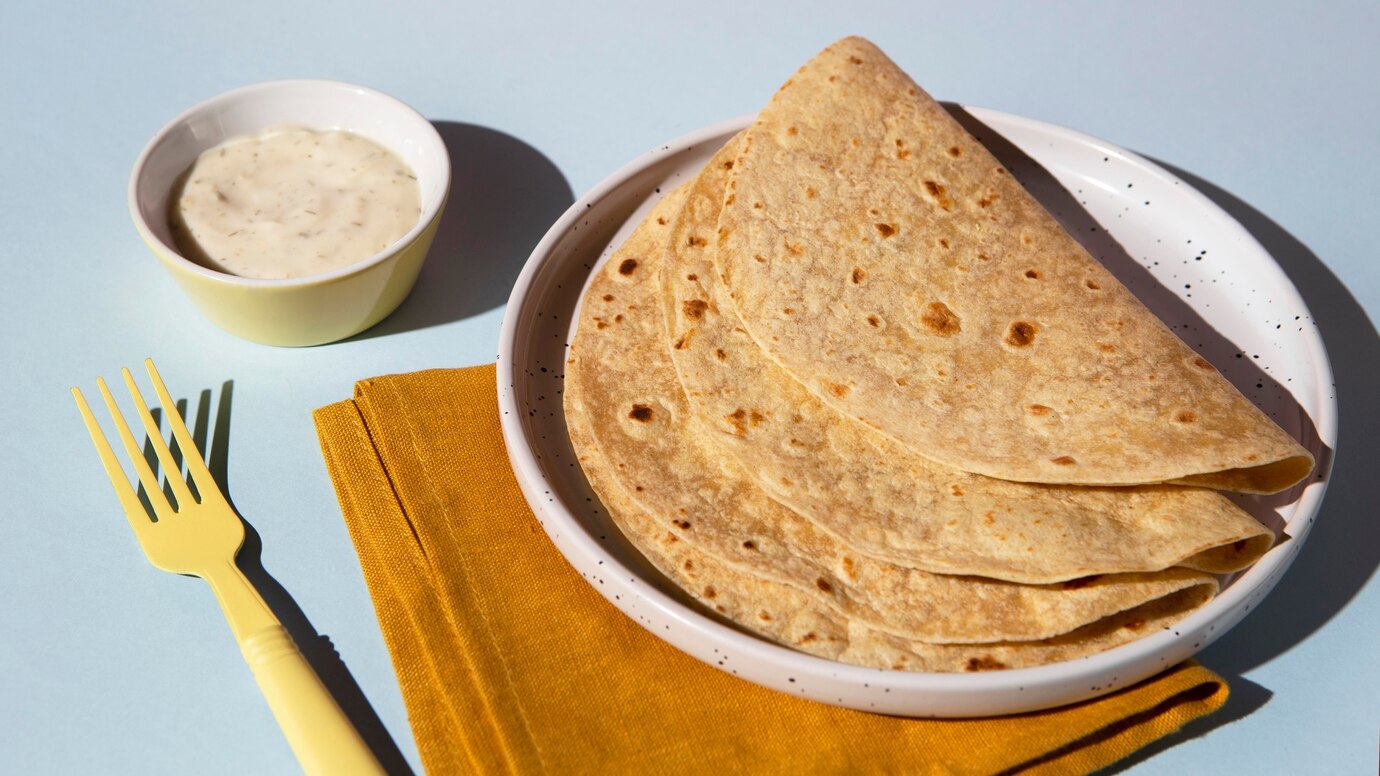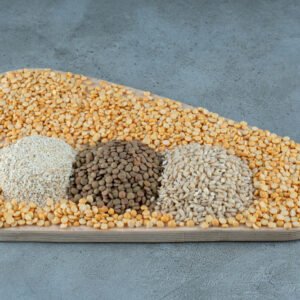Introduction to Bajra Roti and Wheat Roti
In Indian cuisine, rotis are a dietary staple, with bajra roti (made from pearl millet) and wheat roti (made from whole wheat flour) being two of the most popular choices. Both offer unique nutritional profiles, but which is healthier? At CMS Industries, a trusted supplier of high-quality grains and agricultural products, we champion nutrient-rich options like bajra and wheat to support healthy, sustainable diets. With the global health food market projected to reach $1 trillion by 2027, understanding the benefits of these rotis is key for health-conscious consumers.
This blog compares Bajra Roti vs. Wheat Roti, analyzing their nutritional content, health benefits, and suitability for various diets. Discover why CMS Industries’ premium grey bajra(Millets) manufacturer and wheat flours are ideal for crafting wholesome rotis that elevate your health.
What Are Bajra Roti and Wheat Roti?
- Bajra Roti: A flatbread made from bajra (pearl millet) flour, a gluten-free, nutrient-dense grain grown in India and Africa. Known for its nutty flavor, bajra roti is a staple in Rajasthan and Gujarat.
- Wheat Roti: A flatbread made from whole wheat flour (atta), rich in fiber and carbohydrates. Widely consumed across India, wheat roti is a versatile, everyday food.
CMS Industries sources bajra and wheat from trusted farmers, ensuring purity and quality through rigorous testing. Our flours are processed to retain maximum nutrients, making them perfect for healthy rotis.
Why Compare Bajra Roti and Wheat Roti?
Both bajra and wheat rotis are integral to Indian diets, but they differ in nutritional content, digestibility, and suitability for specific health needs. Factors like gluten content, glycemic index, and mineral profiles influence their health impact. By comparing them, consumers can make informed choices aligned with their dietary goals, whether managing diabetes, weight, or gluten sensitivity. CMS Industries’ high-quality bajra and wheat flours ensure you get the best of both grains for optimal health.
Let’s dive into a detailed comparison of Bajra Roti vs. Wheat Roti to determine which is healthier for you.
Nutritional Comparison: Bajra Roti vs. Wheat Roti
To understand their health benefits, let’s compare the nutritional profiles of bajra and wheat rotis (per 100g of flour, approximately 2 medium rotis):
| Nutrient | Bajra Flour | Whole Wheat Flour |
| Calories | 360 kcal | 340 kcal |
| Protein | 10-12g | 12-13g |
| Fiber | 9-10g | 10-12g |
| Carbohydrates | 65-70g | 70-75g |
| Fat | 4-5g | 1-2g |
| Magnesium | 120-140mg | 120-130mg |
| Iron | 6-8mg | 3-4mg |
| Calcium | 40-50mg | 30-40mg |
| Glycemic Index (GI) | 55 (Low) | 70 (Medium) |
| Gluten | Gluten-Free | Contains Gluten |
Key Takeaways:
- Bajra: Higher in iron, slightly lower in calories, and gluten-free with a lower GI.
- Wheat: Higher in protein and fiber, but contains gluten and has a higher GI.
CMS Industries’ bajra and wheat flours are minimally processed to preserve these nutrients, ensuring maximum health benefits in every roti.
Health Benefits Comparison
Bajra Roti Benefits
- Gluten-Free for Sensitive Diets: Ideal for celiac disease or gluten intolerance, bajra roti is safe and digestible.
- Low Glycemic Index: Its GI of 55 helps stabilize blood sugar, making it suitable for diabetes management.
- High Iron Content: Boosts hemoglobin levels, combating anemia and fatigue, especially for women.
- Rich in Antioxidants: Phenolic compounds reduce oxidative stress, supporting heart and skin health.
- Sustainable and Eco-Friendly: Bajra requires less water, aligning with sustainable eating.
Wheat Roti Benefits
- High Fiber for Digestion: Promotes regular bowel movements and supports gut health.
- Protein-Rich: Supports muscle repair and growth, ideal for active individuals.
- Versatile and Filling: Provides sustained energy, making it a staple for daily meals.
- Heart-Healthy: Fiber and magnesium lower cholesterol and blood pressure.
- Widely Available: Easily accessible, making it a practical choice for most households.
CMS Advantage: Our Premium Bajra Flour and Whole Wheat Atta are crafted to maximize these benefits, ensuring nutrient-dense rotis for your table.
Bajra Roti vs. Wheat Roti: Which Is Healthier?
The “healthier” choice depends on individual dietary needs and health goals. Let’s break it down by key factors:
-
Digestive Health
- Bajra Roti: High fiber (9-10g/100g) promotes digestion and prevents constipation, but may be harder to digest for some due to its coarse texture.
- Wheat Roti: Slightly higher fiber (10-12g/100g) supports gut health and is easier to digest for most.
- Winner: Wheat roti, for its higher fiber and smoother digestibility, unless gluten is an issue.
-
Blood Sugar Control
- Bajra Roti: Low GI (55) ensures slow sugar release, ideal for diabetes and insulin resistance.
- Wheat Roti: Medium GI (70) can cause quicker blood sugar spikes, less ideal for diabetics.
- Winner: Bajra roti, for its superior blood sugar management.
-
Gluten Sensitivity
- Bajra Roti: Gluten-free, safe for celiac disease and gluten intolerance.
- Wheat Roti: Contains gluten, unsuitable for those with gluten-related disorders.
- Winner: Bajra roti, for its gluten-free advantage.
-
Weight Management
- Bajra Roti: High fiber promotes satiety, reducing overeating, but its denser texture may feel heavier.
- Wheat Roti: High fiber and protein keep you full, with a lighter texture for easier portion control.
- Winner: Tie, as both support weight management effectively.
-
Nutrient Density
- Bajra Roti: Higher iron and antioxidants, beneficial for anemia and skin health.
- Wheat Roti: Higher protein and fiber, supporting muscle and digestive health.
- Winner: Bajra roti, for its unique iron and antioxidant profile.
-
Sustainability
- Bajra Roti: Drought-resistant, requiring less water and pesticides, making it eco-friendly.
- Wheat Roti: Requires more water and resources, less sustainable in arid regions.
- Winner: Bajra roti, for its environmental benefits.
Overall Verdict: Bajra roti is healthier for those with diabetes, gluten sensitivity, or sustainability priorities. Wheat roti excels for higher protein, fiber, and universal digestibility. CMS Industries’ bajra and wheat flours ensure you can choose the best option without compromising quality.
How to Make Bajra Roti and Wheat Roti
Bajra Roti Recipe
- Ingredients: 1 cup CMS Industries Bajra Flour, warm water, pinch of salt (optional).
- Method: Mix flour and salt, gradually add warm water, and knead into a soft dough. Divide into balls, roll into flatbreads, and cook on a hot tawa until golden spots appear.
- Tip: Use warm water for better dough consistency.
Wheat Roti Recipe
- Ingredients: 1 cup CMS Industries Whole Wheat Atta, water, pinch of salt (optional).
- Method: Combine flour and salt, add water, and knead into a smooth dough. Divide into balls, roll into thin circles, and cook on a tawa until puffed and golden.
- Tip: Rest dough for 20 minutes for softer rotis.
Pro Tip: CMS Industries’ flours are finely milled for easy kneading and nutrient retention, ensuring perfect rotis every time.
Why Choose CMS Industries for Bajra and Wheat Flours?
As a trusted supplier of agricultural products, CMS Industries delivers quality and sustainability. Here’s why we’re the preferred choice:
- Premium Quality: Our bajra and wheat flours are tested for purity and nutrient content, ensuring wholesome rotis.
- Sustainable Sourcing: We partner with farmers practicing eco-friendly agriculture, minimizing environmental impact.
- Global Reach: Our efficient supply chain delivers fresh flours to markets worldwide.
- Customized Offerings: We provide whole grains, flours, and processed products tailored to consumer and industry needs.
- Expert Guidance: Our team offers recipes and tips to maximize the health benefits of bajra and wheat.
Visit CMS Industries to explore our bajra and wheat flours and elevate your meals with nutrient-rich rotis.
Bajra Roti vs. Wheat Roti: Suitability for Specific Diets
- Gluten-Free Diets: Bajra roti is the only option, safe for celiac disease and gluten intolerance.
- Diabetes Management: Bajra roti’s low GI makes it better for blood sugar control.
- Weight Loss: Both support weight loss, but wheat roti’s lighter texture may aid portion control.
- High-Protein Diets: Wheat roti offers slightly more protein for muscle-building needs.
- Sustainable Diets: Bajra roti aligns with eco-conscious eating due to its low resource needs.
CMS Industries’ flours cater to these dietary needs, offering versatility and quality for all preferences.
Potential Side Effects and Precautions
Both rotis are generally safe, but consider these precautions:
- Bajra Roti: High fiber may cause bloating if overconsumed; soak flour for better digestibility.
- Wheat Roti: Gluten can trigger reactions in sensitive individuals; monitor portions for weight control.
- Allergies: Rare, but test for sensitivities when trying either grain.
- Moderation: Balance with vegetables and proteins for a well-rounded diet.
CMS Industries provides preparation guidelines to ensure safe, enjoyable consumption of bajra and wheat rotis.
Tips for Choosing and Preparing Rotis
- Choose Based on Needs: Opt for bajra for gluten-free or diabetes-friendly diets; choose wheat for higher protein and fiber.
- Buy Quality: Select CMS Industries’ flours for purity and nutrient retention.
- Enhance Nutrition: Add spices, herbs, or vegetables to rotis for flavor and health benefits.
- Store Properly: Keep flours in airtight containers in a cool, dry place to maintain freshness.
- Experiment: Try mixing bajra and wheat flours for a balanced, hybrid roti.
The Future of Bajra and Wheat in Healthy Diets
Both grains are gaining global attention:
- Bajra: Rising in gluten-free and sustainable food trends, with applications in snacks and baked goods.
- Wheat: Evolving with fortified flours and organic options to meet health-conscious demands.
- Fusion Cuisine: Chefs are blending bajra and wheat in innovative dishes, expanding their appeal.
- Nutritional Research: Studies continue to validate their roles in chronic disease prevention.
CMS Industries is committed to promoting bajra and wheat through sustainable sourcing and innovative products, ensuring they remain dietary staples.
Conclusion
The choice between Bajra Roti vs. Wheat Roti often comes down to your specific health goals and nutritional needs. Bajra (pearl millet) is a powerhouse of essential nutrients and is naturally gluten-free, making it an excellent option for people with gluten sensitivity or celiac disease. It is also known to help regulate blood sugar levels, making it ideal for diabetic-friendly diets. In contrast, wheat roti is a staple in many households and offers a well-rounded mix of protein and fiber, supporting overall wellness and digestive health.
Both types of rotis come with their own unique benefits. If you’re aiming for better heart health, sustainable eating, or weight management, bajra can be a smart choice. On the other hand, wheat roti provides a balanced energy source for daily nourishment. Choosing between the two isn’t about which is better, but rather about what suits your body and lifestyle.
At CMS Industries, we take pride in offering premium quality bajra and wheat flours, processed with care to retain their natural goodness. As a Top Agricultural Products Supplier in India, we are committed to delivering products that support your health while promoting sustainable farming practices. Our flours are sourced from trusted farmers and processed using advanced technology to ensure purity, freshness, and maximum nutrition in every bite.
Whether you prefer bajra or wheat, CMS Industries empowers you to make healthier choices for your family without compromising on taste or quality. Explore our range of nutritious flours and elevate your meals with the goodness of nature. Visit CMS Industries today and bring home the foundation of healthier, more wholesome rotis.
Frequently Asked Questions (FAQs)
- Is bajra roti healthier than wheat roti?
Bajra roti is healthier for gluten-free and diabetes-friendly diets due to its low GI. CMS Industries’ bajra flour delivers nutrient-rich rotis, but wheat excels for protein and fiber.
- Can bajra roti help with diabetes?
Yes, bajra roti’s low glycemic index stabilizes blood sugar. CMS Industries’ bajra flour supports diabetes management, offering a wholesome, nutrient-dense option for steady energy release.
- Is wheat roti safe for gluten-sensitive people?
No, wheat roti contains gluten, unsuitable for gluten sensitivity. CMS Industries’ bajra flour is gluten-free, providing a safe, nutritious alternative for sensitive diets.
- Why choose CMS Industries for bajra and wheat flour?
CMS Industries offers pure, sustainably sourced bajra and wheat flours, tested for quality. Our nutrient-rich products ensure healthy rotis, trusted globally for excellence.
- How can I make softer bajra rotis?
Use warm water and knead thoroughly with CMS Industries’ bajra flour. Rest the dough briefly to improve texture, ensuring soft, flavorful rotis for every meal.





